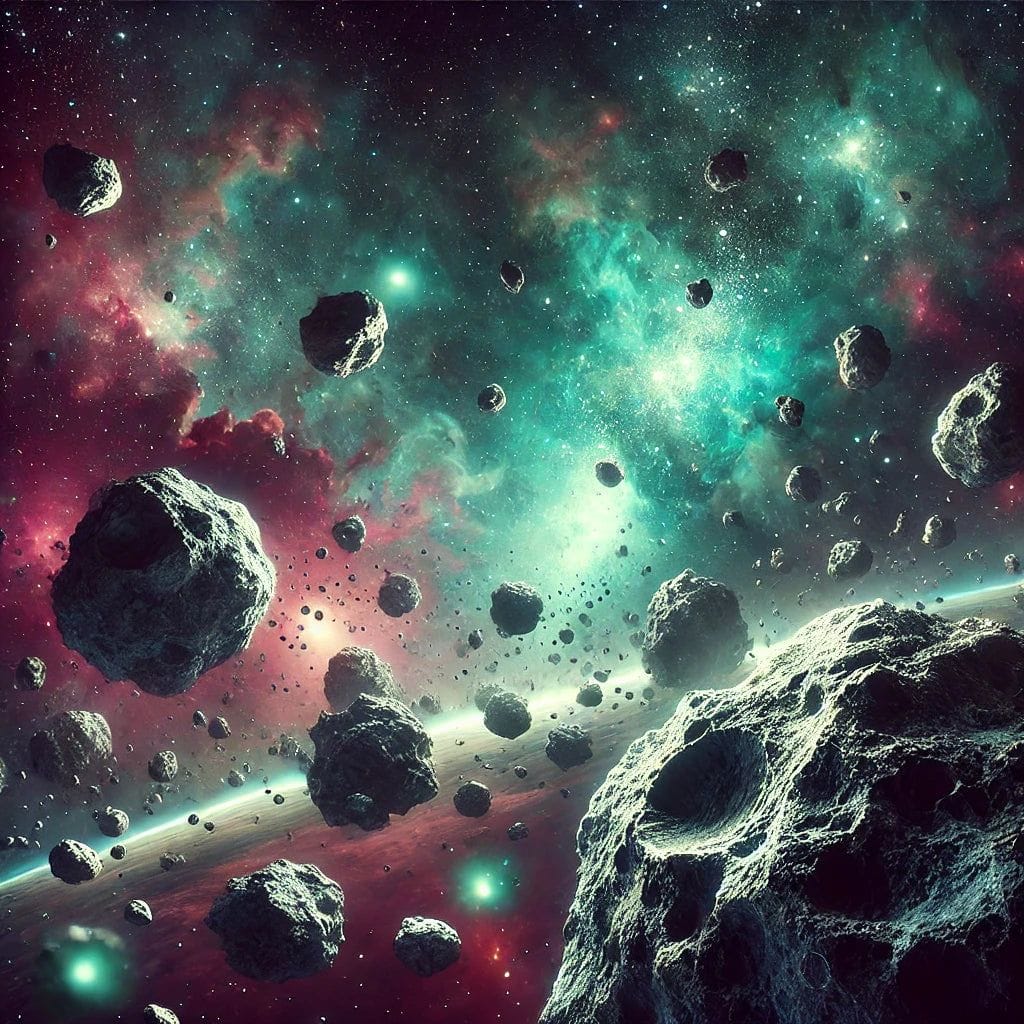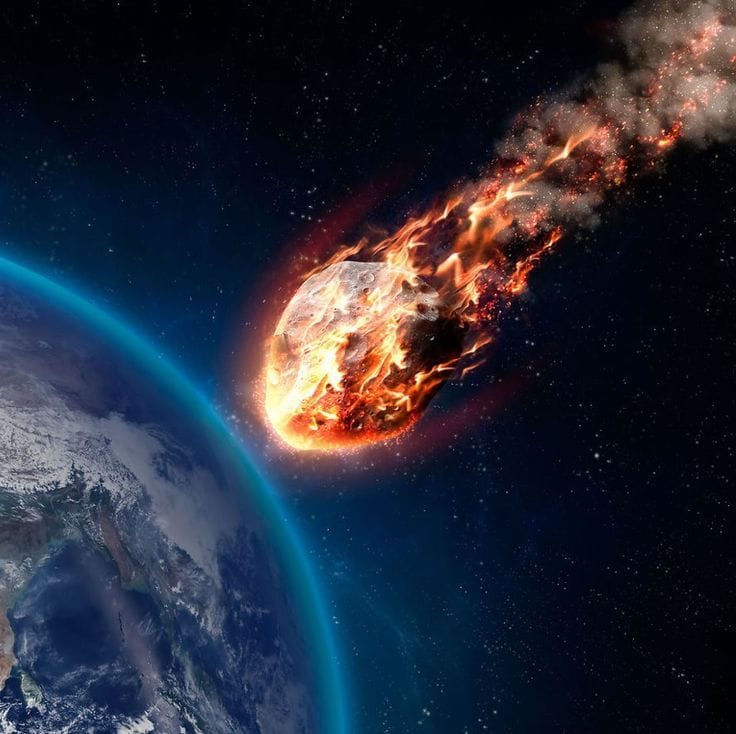Have you ever looked up at the night sky and wondered what’s floating out there between the planets? From tiny space rocks to massive objects the size of cities, asteroids are some of the most fascinating travelers in our solar system. In this article, we’ll explore everything from where they live to how they move and even how they might one day affect Earth. So, if you’re curious about the mysteries of these rocky bodies, buckle up for a journey full of amazing asteroid facts you probably didn’t know!
What Are Asteroids and Where Are They Found?
Asteroids are rocky remnants from the solar system’s formation, orbiting the Sun primarily between Mars and Jupiter in the asteroid belt. They vary in size, with some spanning hundreds of kilometers, like Ceres, the largest asteroid, while others are mere meters across. Beyond the main belt, asteroids are also found throughout the solar system, including near-Earth regions.
Understanding the Asteroid Belt
The asteroid belt is a torus-shaped region located between the orbits of Mars and Jupiter. It contains millions of asteroids, ranging from tiny rocks to dwarf planets like Ceres. This region represents material that never coalesced into a planet due to Jupiter’s strong gravitational influence. The belt’s composition and structure provide valuable information about the early solar system.
Did You Know?
Asteroids can have moons: Some asteroids have smaller bodies orbiting them, known as satellite asteroids.
Types of Asteroids: S-Type and C-Type
Asteroids are classified based on their composition. S-type (silicaceous) asteroids are made primarily of silicate materials and nickel-iron, reflecting more sunlight and appearing brighter. C-type (carbonaceous) asteroids contain a high amount of carbon, making them darker and more primitive, preserving the solar system’s original materials. These types offer clues about the conditions and materials present during planetary formation.
The Main Asteroid Belt and Its Location
The main asteroid belt lies between 2.1 and 3.3 astronomical units (AU) from the Sun, situated between Mars and Jupiter. This region hosts the majority of known asteroids, including large bodies like Vesta and Ceres. The gravitational forces from Mars and Jupiter influence the belt’s structure, creating gaps known as Kirkwood gaps.
What Are Some Interesting Facts About Asteroids?
- Ceres is the largest object in the asteroid belt and is classified as a dwarf planet.
- Vesta, another large asteroid, has a differentiated structure similar to terrestrial planets.
- Some asteroids have moons, and binary asteroid systems exist.
- Asteroids are rich sources of metals and other materials, making them targets for future mining missions.
Largest Asteroids in Our Solar System
The largest asteroids include:
- Ceres: Approximately 940 km in diameter, classified as a dwarf planet.
- Vesta: Around 525 km in diameter, known for its bright surface and basaltic composition.
- Pallas: Roughly 512 km in diameter, with an inclined orbit.
- Hygiea: About 434 km in diameter, nearly spherical in shape.
How Asteroids Orbit the Sun
Asteroids orbit the Sun in elliptical paths, influenced by the gravitational pull of planets, especially Jupiter. Their orbits can be stable for millions of years, but collisions or gravitational interactions can alter their trajectories, potentially sending them into different regions of the solar system.
Did You Know?
Asteroid impacts have shaped Earth’s history: The extinction of the dinosaurs is attributed to a massive asteroid impact.
Asteroids vs. Comets: Key Differences
Asteroids are composed mainly of rock and metal, while comets consist of ice, dust, and rocky material. Comets originate from the outer solar system and develop tails when approaching the Sun due to sublimation of their icy components. In contrast, asteroids typically do not exhibit such activity.
How Do Asteroids Impact Earth?

Asteroids can impact Earth, causing varying degrees of damage depending on their size and speed. Small asteroids often burn up in the atmosphere, while larger ones can cause significant destruction. For example, the Tunguska event in 1908 flattened a vast area of Siberian forest, and the Chelyabinsk meteor in 2013 caused injuries and property damage.
History of Asteroid Impact on Life on Earth
Approximately 65 million years ago, a massive asteroid impact near present-day Mexico led to the extinction of the dinosaurs and about 75% of Earth’s species. This event, known as the Cretaceous-Paleogene extinction, highlights the profound effects asteroid impacts can have on life on Earth.
Potentially Hazardous Asteroids: What You Need to Know
Potentially hazardous asteroids (PHAs) are near-Earth objects that pose a risk of impacting Earth due to their size and proximity. NASA monitors these objects to assess potential threats and develop mitigation strategies. As of now, no known PHAs are on a collision course with Earth, but continuous monitoring is essential.
NASA’s Role in Monitoring Asteroid Impact Risks
NASA plays a crucial role in detecting and tracking asteroids through programs like the Near-Earth Object Observations Program. They use telescopes and space missions to identify and monitor asteroids, assessing their orbits and potential impact risks. NASA’s efforts are vital for planetary defense and developing strategies to prevent possible collisions.
Did You Know?
NASA actively monitors potential threats: Programs like Sentry assess and track asteroids that could pose risks to Earth.
What Are Near-Earth Asteroids?
Near-Earth asteroids (NEAs) are asteroids whose orbits bring them close to Earth’s orbit. They are categorized based on their orbital characteristics, such as Apollo, Amor, and Aten groups. Studying NEAs helps scientists understand potential impact risks and the dynamics of asteroid orbits.
Exploring Near-Earth Asteroids
Exploration of NEAs involves space missions that aim to study their composition, structure, and behavior. Missions like NASA’s OSIRIS-REx, which collected samples from asteroid Bennu, provide valuable data for understanding these objects and developing impact mitigation techniques.
The Importance of Asteroid Watch Programs
Asteroid watch programs are essential for early detection of potentially hazardous asteroids. By continuously monitoring the sky, these programs can provide warnings of possible impacts, allowing time for preparation or deflection efforts. Public awareness and education are also key components of these programs.
Famous Near-Earth Asteroids
- Apophis: Once considered a potential threat, further observations have ruled out an impact in the foreseeable future.
- Bennu: Target of the OSIRIS-REx mission, providing insights into asteroid composition and structure.
- Toutatis: Known for its close approaches to Earth and irregular shape.
What Are Current Asteroid Missions?
Current asteroid missions include:
- OSIRIS-REx: Returned samples from Bennu to Earth.
- DART (Double Asteroid Redirection Test): Tested asteroid deflection by impacting the moonlet Dimorphos.
- NEO Surveyor: A planned space telescope to detect and characterize near-Earth objects.
NASA’s Asteroid Missions and Goals
NASA’s asteroid missions aim to understand the composition, structure, and behavior of asteroids. Goals include assessing impact risks, testing deflection techniques, and exploring the potential for resource utilization. These missions contribute to planetary defense and scientific knowledge.
Double Asteroid Redirection Test: A Key Mission
The DART mission successfully demonstrated the ability to alter an asteroid’s trajectory by impacting Dimorphos, the moonlet of asteroid Didymos. This test is a significant step in developing techniques to prevent potential asteroid impacts on Earth.
Future Missions to Explore Asteroids
Future missions aim to further study asteroids, test new technologies, and explore resource utilization. These include missions to Trojan asteroids, sample-return missions, and potential mining endeavors. Advancements in technology will enhance our ability to interact with these celestial bodies.
How Do Asteroids Form and Evolve?

Asteroids formed from the leftover material of the solar system’s formation. Over time, they have undergone changes due to collisions, solar radiation, and gravitational interactions. Studying their evolution helps scientists understand the history and dynamics of the solar system.
The Origin of Asteroids in the Solar System
Asteroids originated from the protoplanetary disk that surrounded the young Sun. While planets formed from this material, some remnants remained as asteroids. Their distribution and composition provide clues about the early solar system’s conditions.
How Asteroids Change Over Time
Asteroids can change due to collisions, which may fragment them or alter their orbits. Solar radiation can cause surface changes, and gravitational interactions can shift their paths. These changes affect their potential threat to Earth and their suitability for exploration.
The Role of Asteroids in the Formation of Planets
Asteroids played a crucial role in delivering materials during planetary formation. Their collisions and aggregations contributed to the growth of planetary bodies in the early solar system.
Frequently Asked Questions about Asteroid
What should we know about asteroids?
Asteroids are small rocky objects that orbit the Sun and vary in size, composition, and structure. Some are binary asteroids, others have an asteroid moon, and a few are differentiated asteroids with internal layers. Though asteroids are small, the mass of all the asteroids combined forms only a tiny part of the mass of the asteroid belt, most of which lies between Mars and Jupiter.
What are 5 facts about asteroids?
- 1.9 million asteroids larger than 1 km exist in the solar system.
- Some asteroids have moons, forming binary systems.
- The first asteroid discovered was Ceres in 1801.
- A piece of asteroid that reaches Earth becomes a meteorite.
- Asteroid orbits vary, and some become Earth-crossing.
How old is an asteroid?
Most asteroids are over 4.5 billion years old, forming during the early solar system. Some asteroids are made of metal and rock, showing signs of being differentiated asteroids, while others remain primitive. It’s estimated that asteroids contain materials unchanged since planet formation.
How fast do asteroids travel?
Asteroids can travel between 25,000 and 100,000 km/h depending on their asteroid orbits. A fast-moving orbiting asteroid near Earth is monitored closely, as an asteroid could shift its path due to gravity, making asteroid missions vital for tracking and understanding their behavior.
Asteroids are more than just space rocks; they are keys to understanding our solar system’s past and safeguarding our planet’s future. With ongoing research and missions, we continue to unveil the mysteries of these celestial bodies. Stay curious and informed, as the study of asteroids holds answers to many cosmic questions.
Read also about Life on Mars